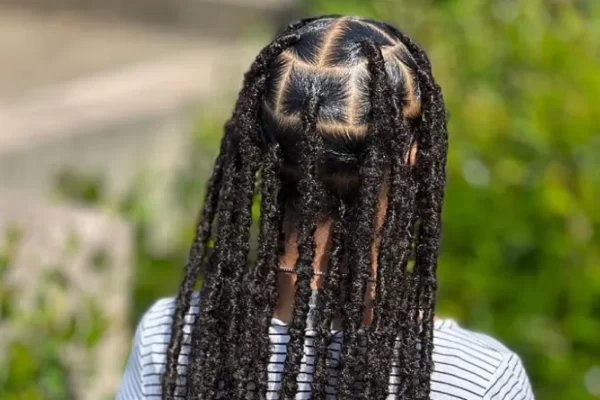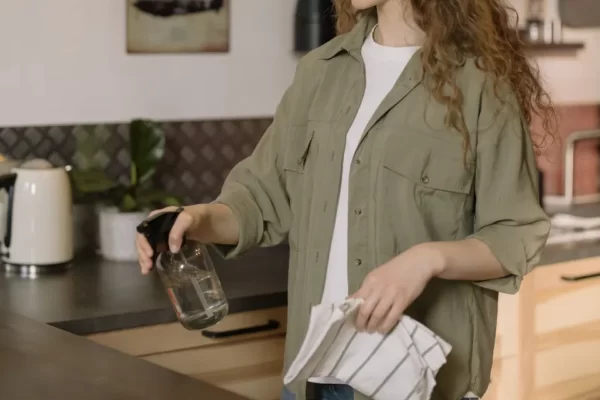We used to only have natural dreadlocks and faux locs back when things were simpler. Today, however, there are more locs than you can count, including bohemian, goddess, butterfly, and faux locs.
The fact that there are so many options available makes it increasingly difficult to distinguish between the various types, which is why we’re here to assist. We previously talked about the distinctions between locs and dreads, but today we’ll delve even further.
Learn the distinctions between soft locs and faux locs in this article to help you identify which is which. If you read this article through to the end, you should be aware of the advantages and disadvantages of both hairstyles, giving you all the information you need to choose a hairstyle wisely.
What Are Soft Locs?
A soft loc is a protective style with a more natural look, lightweight, and low maintenance.
Such hairstyles are characterized by sectioned natural hair braids or cornrows covered in locs of synthetic hair extensions.
To wrap natural hair, the following wrapping method options are used in DIYs and hair salons:
- Crochet loc method
- Spring twist hair method
- Passion twist hair method
Yet, what is most prevalent from these options is the crochet method, where a stylist will use a crochet loc needle to insert the synthetic hair extensions at the top of the tied braid or twisted hair section.
Furthermore, this hairdo is simple to duplicate, especially if you have long enough hair to braid. Yet, when you have a lot of braided sections, it mostly takes up to two to five hours to finish.
What Are Faux Locs?

Since we all know what locs mean, faux is French for fake. Once you are aware of what both terms mean, which I think you already are, defining faux locs is simple. Faux locs are a popular group of styles that attempt to mimic the appearance of mature dreadlocks for those who are ignorantly wearing them.
Faux locs use artificial hair that has been specially created to look like dreadlocks, unlike real locs, which frequently only use the wearer’s hair. Once you’ve finished installing faux locs, you can wear them for months before changing your hairstyle.
Pros and Cons of Soft Locs Vs. Faux Locs
The benefits and drawbacks of soft locs are identical to those of faux locs if you are aware of the differences between the two hairstyles in question. The main focus of this section, however, is on benefits that are only available to people with soft locs.
Now that that has been said, here are some benefits and drawbacks of soft locs and faux locs in general.
Pros
- They’re long-lasting
The fact that locs typically last a very long time is one of their best qualities, which is not at all surprising. The idea behind locs is to keep the same hairstyle on for an extended period of time until it begins to lock. If you’re taking the artificial route to get there, you wouldn’t want to say no to keeping it for a little while longer than your typical hairstyle.
Still on this, soft locs usually look better with time because the locs become more defined, which enhances the overall appearance of the style. Faux locs, or more specifically, soft locs, are what you need if you want a style that can last for a long time naturally without requiring daily maintenance.
- They’re light and easy to carry
Like I mentioned earlier in this article, this benefit only applies to soft locs. It’s not quite the same for soft locs, whereas the majority of faux loc variations are heavy and add some mental weight. As a result of their soft texture, they are typically lighter and simpler to wear than traditional faux loc hairstyles.
When you need to install very long locs that you style into an updo, this benefit can be helpful. You would have had to carry twice as much weight on your head if it weren’t for soft locs.
- The locs are instant
The main advantage of soft locs, as well as all other forms of faux locs, is that they can be worn right away and look almost exactly like mature locks. It’s convenient that you can skip that since waiting can be tedious and time-consuming if you’ve ever tried to grow dreadlocks.
Even though there isn’t a long wait, you still get something adorable that usually lasts for a very long time. If everything else is equal, I don’t think fake mature locs will ever be as good as real ones, but they do have some pretty big wins over the real thing.
Cons
Even though soft locs have a number of very important advantages, they also have some disadvantages that might make you want to reconsider getting them. You are free to make your own decisions, but if it were up to me, I would say that those disadvantages aren’t quite serious enough to call for a rethink.
If you don’t keep it moisturized all the time, one of the drawbacks is that the locs tend to stick together more frequently than they should. Regular locs can experience this issue as well, and depending on who you ask, it may or may not be a disadvantage. Avoid faux locs entirely if you find it difficult to deal with your hair constantly sticking together.
If you want your locs to last a long time, you should also think about how frequently you wash them. If you don’t use a shampoo made specifically for artificial locs, hair will fly everywhere.

What Are the Differences Between Soft Locs and Faux Locs?
You should already be aware of the main distinction between soft and faux locs if you’ve read the article carefully up to this point. I’ll give you the benefit of the doubt and assume that you only started reading from this section, so I’ll go over the distinctions between the two kinds of locs in question.
Since they are all essentially the same, soft loc hairstyles are a subset of faux locs, as was previously stated. All faux locs are also soft locs, but not all soft locs are faux locs. The former describes any hairstyle that attempts to resemble authentic dreadlocks, whereas the latter describes a type of faux locs with a soft texture.
The distinctions between the two terms are much simpler to comprehend once this is kept in mind. Along with the main distinction, soft locs have a softer appearance, as would be expected given the name. They are still faux locs, of course; they just have a feature that only soft locs have.
Soft locs are lighter on your head than the majority of other faux loc hairstyles, as you might expect from a style with a softer look and feel. Less weight equals less pull on your hair, which reduces the risk of hair loss due to breakage. This quality is a huge plus for the former.
The type of hair that was used to create the hairstyles is another clear distinction that deserves to be mentioned. Soft locs increase the level of specificity even further than faux locs, which already call for a particular style of hair extensions. You need to use enhancements because your hair doesn’t naturally have that adorable, soft appearance.
You should be aware that the majority of the things mentioned here are not meant to be viewed as distinctions between soft locs and faux locs. There are no differences between the two, as they ought to be the same, to be clear. I’m merely attempting to demonstrate the differences between your typical faux loc hairstyle and haphazard soft locs.
How Much Are the Soft Locs Or Faux Locs?
Soft locs have a different price range from faux locs, with soft locs costing $200 to $400, while faux locs are on a $100 to $300 pricing average.
The prices established for soft locs or faux locs vary because of the following:
- The styling method needed
- The expertise of the professional stylist
- The materials to be used in soft locs or faux locs
Intricate because they require a long-term commitment, both hair extension methods should not be disregarded.
Which Hair is Optimal for Soft Locs Vs Faux Locs
Thick or thin, long or short, there is no denying that both soft and faux locs can deliver eye-catching styling visuals for your Afro-textured hair — regardless if your hair is kinky, coily, wavy, or curly.
Nonetheless, in a soft loc, you can have crocheted extensions that have the following length:
- 30-inch length
- 36-inch length
For faux locs, on the other hand, medium length of crocheted extensions are primarily used, such as:
- 10-inch length
- 20-inch length
Does Soft Loc Or Faux Loc Require More Maintenance?

Having crocheted soft locs or faux locs means committing to a regular maintenance or hair care routine.
For soft locs, you need extra patience in taking care of it by remembering specific tips, such as:
- Wear shower caps every time you go for a body shower to prevent the natural locs from splitting with the soft faux locs
- Keep your hair’s texture hydrated to the roots
- Never skip wrapping your hair every night before sleeping
On the other end, faux locs need some loving and caring, too. To do this, here are what you need to bear in mind:
- Wear satin and silk wraps before going to bed to ease tension
- Massage your scalp with your fingers every time you shower
- Rinse with lukewarm or hot water when faux locs become stiff and frizzy
Conclusion
The comparison of soft locs and faux locs is a major misconception, as they aren’t even competitors to begin with, according to this article. Despite that, I’ve done enough to demonstrate the differences between the two and the advantages and disadvantages of purchasing each.





